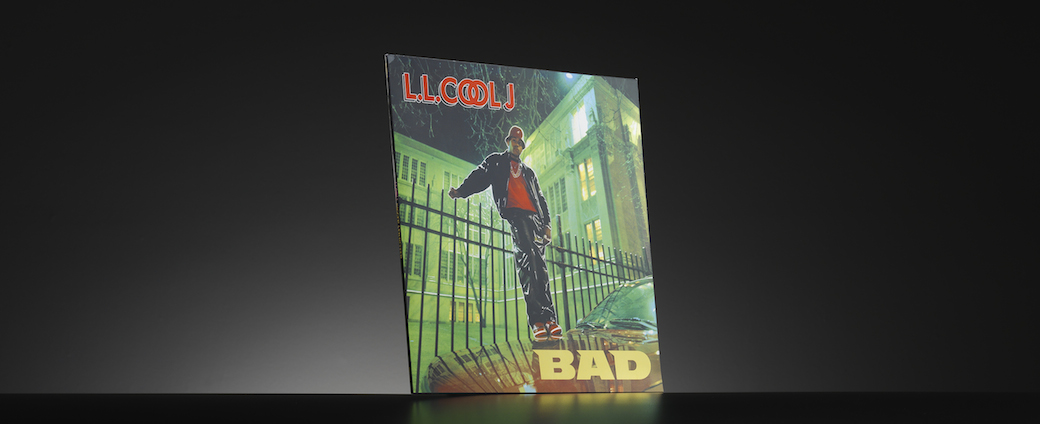
Here at JohnsByrne, we dedicate ourselves to the pursuit of cutting-edge printing techniques and effects that give your customers a new perspective on your packaging. One way we help you achieve that is by using lenticular printing, which allows your packaging to display a visual depth that engages your customers in a way that traditional printing cannot.
How Lenticular Printing Works
When flat images are layered on top of each other, they can be manipulated to convey movement and depth. A plastic sheet covers the image with tiny strategically placed slits so the ridges allow for the eye to catch each image from different angles.
The pre-press team at JohnsByrne begins the lenticular creation process by cutting each image into different strips and weaving them together. Digital technology makes this an automatic process, but specific designs require custom builds. Different-sized lenses require different widths, and the width determines how many images (and other factors, like color and depth) can be placed together. Ultimately, the printed product depends on the desired angle range needed for customers. More ridges equates to a wider range.
There are two main kinds of effects gleaned from lenticular printing, animation and three-dimensional (3-D) viewing.

- Animation. Animation images are ones that look like a short-video. They can be compiled with computer-generated animations, films, or even photos taken over a period of time. These images can be morphed, flipped around, or instilled with zooming effects.
- 3-D. Three-dimensional viewing creates an illusion of depth. It makes an image appear “real life” and can be combined with other effects to make the image glossy or to show movement.
Images are most effective in lenticular printing if they stand out. In other words, good design is focused on displaying strong, colorful images that stand out. This helps enhance 3-D and animation. Having a strong focal point in the image draws attention to the animated or 3-D effect. Some images seem to “move more” if the viewer is focused on a single point. Horizontal lines help sharpen images. Using consistent elements keeps viewers from breaking the magic of the images’ effects.
The most important aspect of lenticular printing is the end-user’s apparent distance. Store displays should assume that viewers will be within two to 10 feet of the image, while images used in industry conferences—with hundreds of people—need to take long-distance viewing into consideration. Assumed distance determines the designer’s options for font, typesetting, image complexity, layout and the limit to the image’s lenticular effects.
Useful Applications for Lenticular Printing
There are a variety of uses for lenticular effects. While your imagination truly decides the limit, here are some common applications used in lenticular printing.
- Children’s Advertising. From cartoon characters to the impressive displays used to advertise the final Harry Potter DVD/Blu-Ray release, lenticular effects can make it look like characters are interacting with people walking past. Children love it when their favorite cartoon character is winking from a display, and it catches the attention of parents as well. They make for great end-cap displays in retail stores.
- Promotional Material. Any company that utilizes before and after pictures have found flip images to be extremely useful. For instance, a health and beauty product manufacturer that produces a nutraceutical facial moisturizer could use lenticular printing effects to show before and after images of people who use their products. The displays are visually impressive, they instantly showcase how the products work without customers having to visit a website, and it doubles as a point-of-sale display.
- High Impact Direct Mail. Companies can send flip-image cards to customers that display their work or provide innovative messages to their target demographic. For instance, an insurance company could send mailers to flood victims to show the difference between having flood insurance and having a wrecked basement. Lenticular postcards can reinvigorate tourism, showing snow-bound consumers that tropical getaways are just a reservation away.
- Business Cards. For those looking for a flashy alternative to stock cards and flat designs, lenticular effects are great for graphic designers, artists and others in the creative field to make a great first impression.
The Do’s and Don’ts of Lenticular Printing

When working with a technology as precise as lenticular, there are certain best practices that JohnsByrne recommends to ensure your packaging is dynamic as possible:
- Do think about your color choice and where you place images
- Don’t use white or extremely light-colored backgrounds
- Do think about where and how far away the customer will be
- Don’t use serifs, script, italics or really small fonts
- Do keep element colors and shapes consistent
- Don’t overly complicate the animation
- Do use horizontal lines for animation to avoid the image looking fuzzy
- Don’t have the movement travel from one side of the package all the way to the other
Our interlaced image technologies allow us to press the limits to limitless. With our G7-certified pressroom and Press384, we are consistently able to satisfy our clients’ needs and bring ideas to life. For more information on how your company can use lenticular printing to innovate its packaging, please contact us today.
Related Posts
In the evolving premium spirits market, packaging is more than a protective layer, it is a key brand ambassador. Secondary packaging including folding cartons and … Premium Spirits Packaging: Trends Shaping the Future
As e-commerce continues to expand and the retail environment—in terms of brand display—grows ever more sophisticated, it’s essential for brands to stay on trend with … Premium Packaging Solutions: Following Trends with Real Brand Impact
For companies looking to improve their bottom line, packaging can be a prime target for cost reduction. However, cutting packaging costs is often a balancing … Mastering the Balancing Act: Proven Strategies for Reducing Packaging Costs While Boosting Innovation
